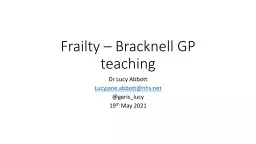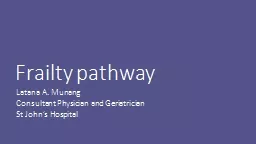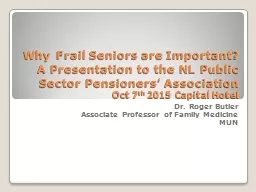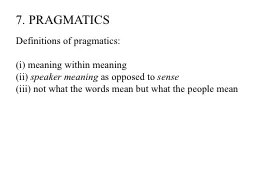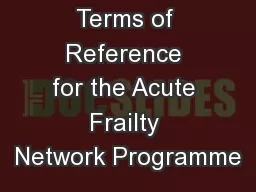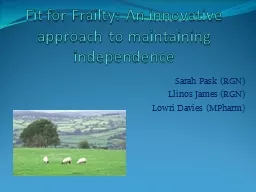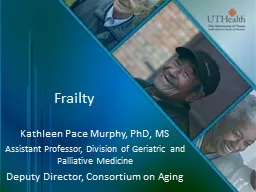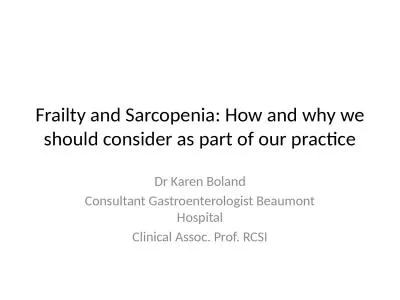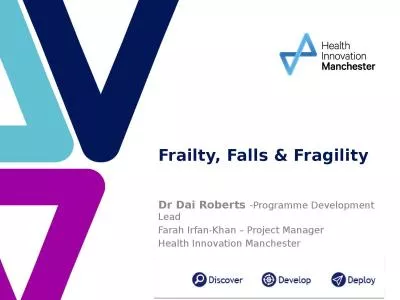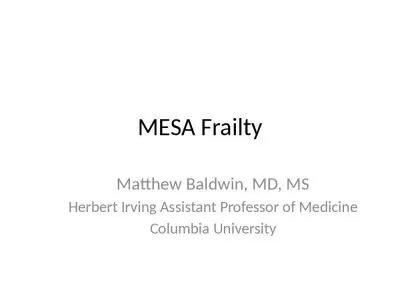PPT-Frailty – Bracknell GP teaching
Author : anya | Published Date : 2022-06-15
Dr Lucy Abbott Lucyjaneabbottnhsnet gerislucy 19 th May 2021 Overview Background Frailty pathophysiology Biology of ageing Why does frailty develop Frailty syndromes
Presentation Embed Code
Download Presentation
Download Presentation The PPT/PDF document "Frailty – Bracknell GP teaching" is the property of its rightful owner. Permission is granted to download and print the materials on this website for personal, non-commercial use only, and to display it on your personal computer provided you do not modify the materials and that you retain all copyright notices contained in the materials. By downloading content from our website, you accept the terms of this agreement.
Frailty – Bracknell GP teaching: Transcript
Download Rules Of Document
"Frailty – Bracknell GP teaching"The content belongs to its owner. You may download and print it for personal use, without modification, and keep all copyright notices. By downloading, you agree to these terms.
Related Documents

